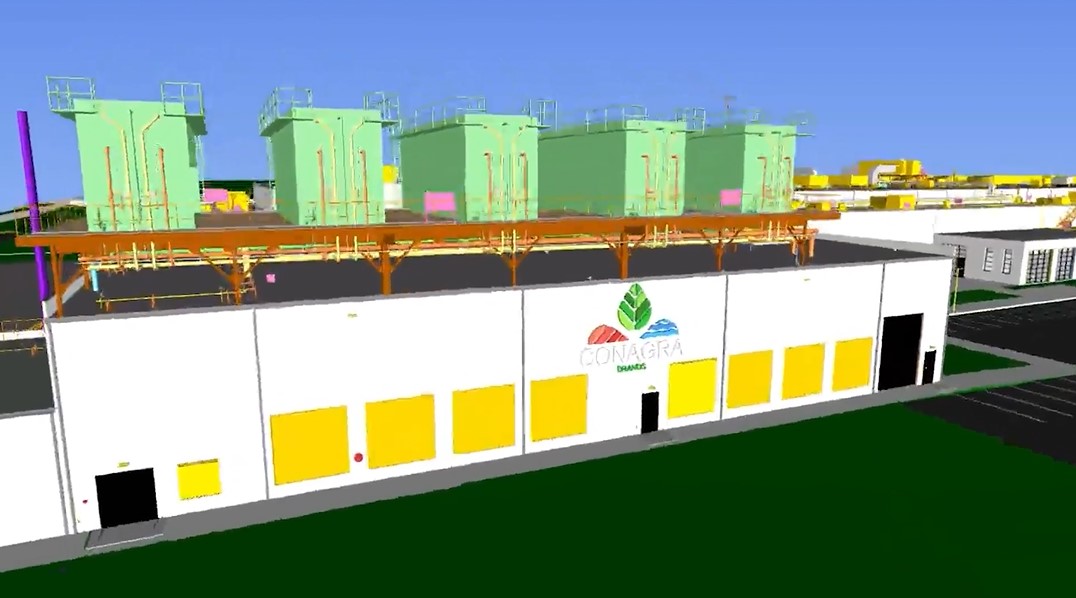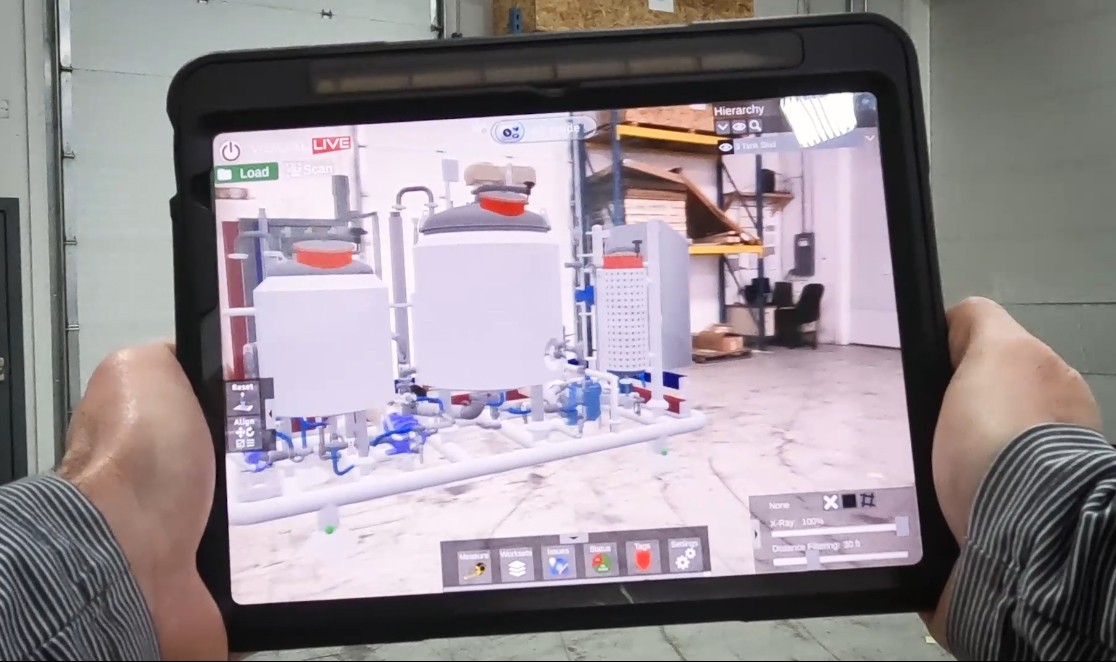
Every construction project faces the challenges posed by time, budget and function. With any project, you want to be sure the work is done on schedule and within (or under) budget, and that the final product functions as promised. Getting a project across the finish line within these parameters can mean the difference between staying competitive or falling behind.
When a construction project is as large and complex as a new, state-of-the-art vegetable processing plant, the challenges are magnified exponentially. And because harvest time waits for no one, the schedule becomes even more important.
When Foth partnered with Conagra Brands to construct a new, 245,000-square-foot facility to replace one that had been in service for many years, they ultimately opted for a design-build project that resulted in fewer delays and shorter timelines.
A design-build approach empowers manufacturers to delegate a sole point of accountability who can more quickly achieve the project goals by pivoting to meet changing needs.
Below are top-of-mind considerations as you plan and manage your next capital project.
The Value of Understanding Your Business
Manufacturers and processors of specialty items face a unique challenge when modifying their production facilities. They need to work with experts who can execute the construction while also understanding the nuances of their business. It’s a rare general contractor who has the right blend of skills and knowledge.
Specialized manufacturing revolves around the equipment and its operators. Consequently, a general contractor would need to retain an engineering firm to ensure the equipment demands are met and seamlessly integrated. And when complex facilities are involved, with a large number of moving parts, the project management is further challenged by the number of subcontractors working at any given time.
It’s projects like these where an engineering-led project team takes the lead.
Design-Build vs Contractor-Led
A design-build project team brings at least two distinct advantages to complex, process-centered projects. For one, it brings the expertise necessary to understand the relationship between the facility, the equipment, and the people who use it. Understanding this relationship enables the team to design a facility that focuses on the equipment involved and build out from there.
Perhaps the biggest advantage lies in the efficiencies within the engineering team itself. Because the members are assembled from distinct, yet complementary disciplines, they bring knowledge, experience and expertise from their work in other projects. When these team members come from the same engineering group, they can quickly and seamlessly connect with each other. As a result, the team can draw on its internal resources to move the project along as quickly as possible. This becomes especially important if there are disruptions that arise or changes in scope that occur. The team can adapt without missing a beat, rapidly resolve issues and transfer that information to the build team, thereby implementing design changes quickly.
To illustrate, during our engagement with Conagra Brands, our design-build approach helped save time and budget by scoping out the locations for electrical conduits and drains associated with hundreds of machines. Leading with our engineering expertise, we were able to document the requirements for each machine early in the project and avoid delays or rework that would have added to the budget.
Single-Source vs Multiple Contractors
When it comes to large, complex projects, coordination of the work becomes increasingly difficult as more points of contact are involved. In a way, it’s like having too many cooks in the kitchen: the risk of missteps and slowdowns is greater, and when problems caused by weather or supply chain disruptions arise, coordination among the parties takes extra time, negatively affecting the schedule and budget. With single-source project management, there’s one point of contact who can handle problems as they arise and make quick decisions that prevent delays and adhere to budget governance established with the client.
Another aspect of construction that favors single-source management is the extent of overlap it provides between designing and building the facility. When the entire project is under control of a single entity, there is more efficient transfer of knowledge from the designers to the builders, and frequent, uninhibited feedback between the parties leads to better communication and alignment.
Complex projects pose a risk of blurring or obscuring accountability. When there is one entity taking ownership of the project, it’s easier to determine who is responsible for resolving problems. In addition, single-source leadership can ensure all parties share the vision for the finished product, so they know how their part fits within the whole. This is critical when specialized equipment or manufacturing processes are involved.
In the Conagra Brands project, the construction timeline took priority, so everything had to work as planned. The timeline was constrained by the crop season, which left little room for error. Through single-source management, essential activities like site-selection, permitting, bidding, and vendor selection were all handled quickly under one roof. When it came to on-site work management, the 250-plus sub-contractors on the job each day were efficiently organized and able to pre-fabricate items in time to meet or beat the project schedule.
Perhaps one of the strongest benefits of single-source management is the ability to minimize problems, problem-solve quickly when issues arise, and adapt to external changes. In this project, a global pandemic, supply chain issues, commodity price fluctuation, and weather events combined to keep the project management team on its toes. Fortunately, the shared knowledge on the project team, combined with excellent collaboration with our client, produced innovative solutions. For example, the new facility was located adjacent to an airport, so crane heights were limited. The project team resolved this by using helicopters to lift 120 pieces of equipment onto the roof. As the entire world experienced, the pandemic presented new varieties of challenges, including supply chain issues resulting in much of the equipment being delayed or unavailable. So the team worked to procure as much equipment as they could early, and even changed the design based on what was available. And when labor shifts and shortages arose, the team developed a backfilling solution to keep things moving.
Get What’s Been Missing from Your Capital Projects
The Conagra Brands project was a massive success for Foth and our client, much of which can be attributed to collaboration and the design-build approach. The beauty of design-build is that it can create similar advantages for a wide variety of projects. We take greenfields, brownfields, upgrades and integrations from conception to production. Seamlessly. Reach out to learn how design-build, backed by full-service engineering, solves the toughest aspects of capital projects.
Markets: Consumer Products, Food and Beverage, Manufacturing and Industrial Products, Pulp and Paper
Related Insights
From Ideation to Realization: How Serial 1 Automation Accelerates Production Innovation
10.13.2022 | Joseph Spychalla



